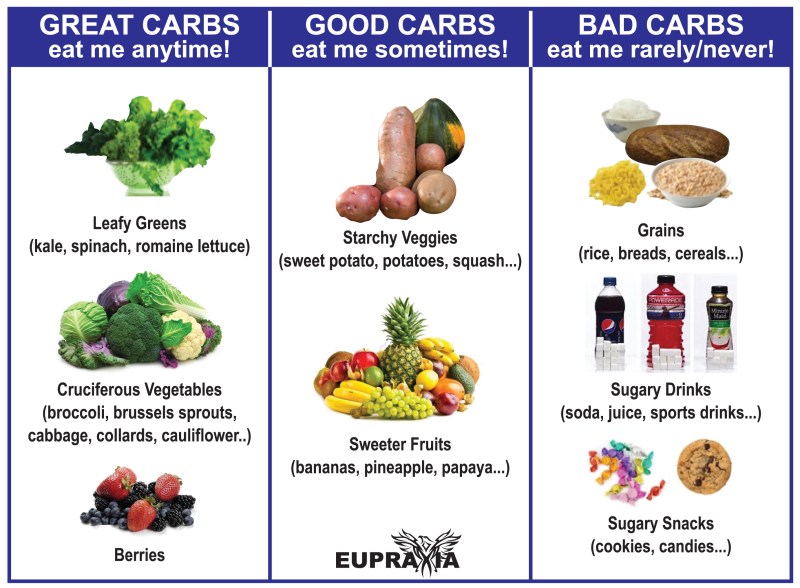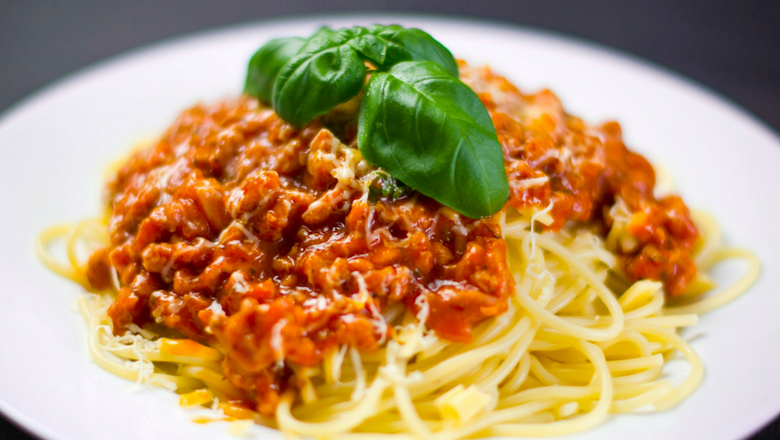You may have heard the terms “complex carbs” and “simple carbs” along the way. Complex carbohydrates, or unrefined carbohydrates, are tied with fiber. Fiber does wonders for the body, softening stool and decreasing the risks of both heart disease and colorectal cancer. All of your vegetables and true whole grains (not processed ones) are examples of complex carbohydrates. Simple carbohydrates, or unrefined carbs, are found in all your packaged goods, like cakes and cookies (as a simple sugar), in your milk and milk products (in the form of lactose), and also in fruit (in the form of fructose). Please keep in mind this does not mean fruit is necessarily bad for you as it has an added benefit in the form of a soluble fiber called pectin, which imparts the benefits of fiber as described above. Because it is a simple carbohydrate, though, it will not keep you full as long as a complex carbohydrate.
I have included the infographic below to help you decipher “great carbs” from “good carbs” and “bad carbs.” The only thing I might argue is that some true whole grains could be eaten more often than “rarely,” but this can be a slippery slope because most things that claim to be “whole grain” are actually not, making it increasingly difficult to find true whole grains. Provided you don’t have celiac disease, or a severe gluten sensitivity, the best form of bread I’ve seen are sprouted grain breads (such as Ezekiel Bread). If you are going to eat grains like oats and bran, make sure they are not processed, sugary versions and keep them in moderation as well. As I have mentioned in the past, choosing organic, non-GMO versions of all of these things is also a win.
And because a picture is worth a thousand words, here you go:

This image is from the following site:

